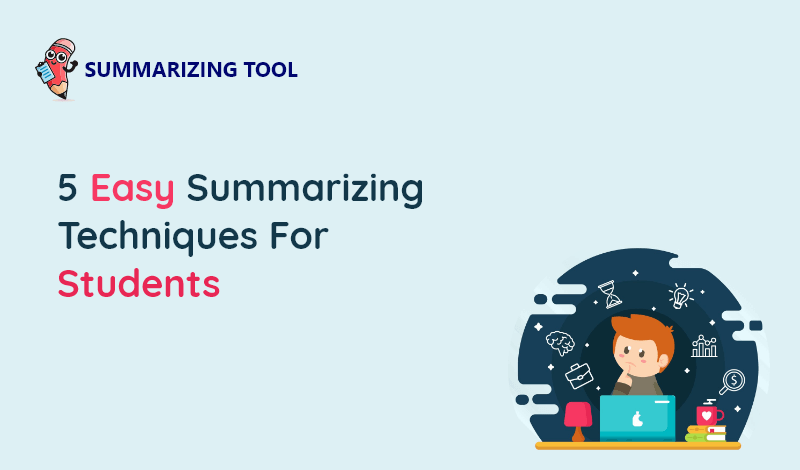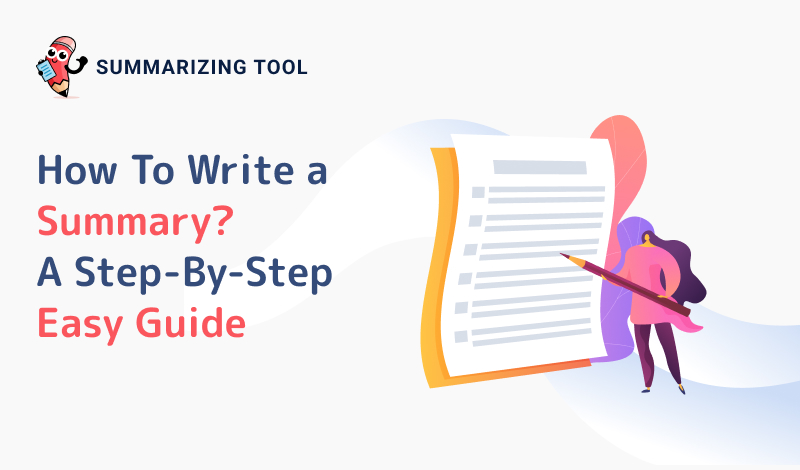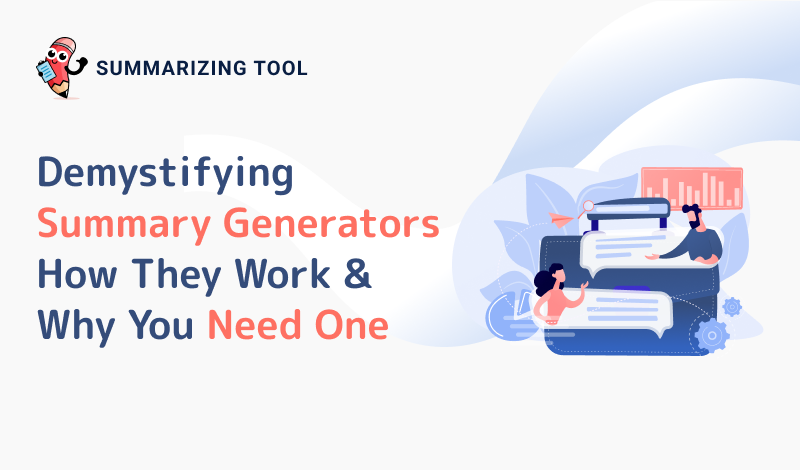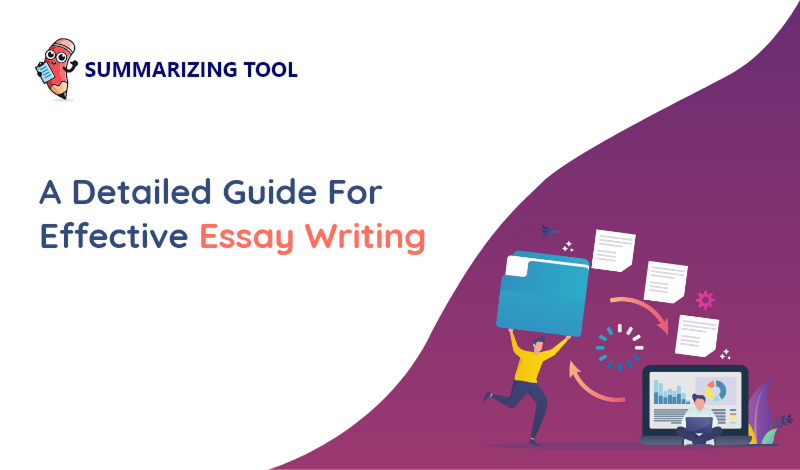
5 Easy Summarizing techniques for Students
Dec 08Describing lengthy content in just a few sentences can be real fun as long as you know what to add and what to ignore.
Summarizing is not meant to ignore points but it refers to adding all the main points by reading. So, anyone can understand what you have written in your whole content.
In simple words, summarizing is a process of wrapping up content while keeping the important points in consideration.
But what is meant by important points of context?
There are some points that can easily make a cloud of the whole content and this cloud helps the reader to determine what the author discussed in the content.
When you are going to do any task, there is always more than one way or we can say that there are always different techniques available for doing any task.
The same goes for summarizing the content, there are many useful techniques that can be considered as time-effective and energy-savers.
We are going to discuss some of the useful and time-saving techniques below.
SWBST Method
SWBST is an abbreviation of “somebody, wanted, but, so, and then” but what does it mean?
We can consider this method as the easiest of all and that’s why we are discussing it at first but it doesn’t mean the other methods are not effective.
So, let’s see how a student can summarize any article or content using this method.
The very first factor is “somebody” which refers to the main character of the story and makes it clear that this method is mostly used in summarizing research papers, essays, or stories.
Then it comes to the word “wanted” and we can say that it refers to what the main character needs or wants.
As we have specified that “somebody” is the main character of the story so, we are talking about that character.
But things are not done yet! There are three more factors to be discussed and we are going to discuss them.
We need to use “but” to identify a problem that the main character is facing and “so” is the solution to that problem.
Here comes to the end by placing “then” and it refers to the conclusion of the summary.
Using summary generators
Undoubtedly, there are many techniques that can easily generate a summary for you but the thing is, we need to pick one that generates a summary with all the accuracy and in less time.
It is not wrong if we say that using a summary generator can surely help regarding this situation where you need accuracy as well as time-efficiency.
All you need to do is copy the content you want to summarize and paste it into the field specified by the summary generator.
Then you can simply click on the submit button and you are all done with your task. It is not wrong to say that using summarizing tool is considered the easiest approach.
And it is not the easiest approach only but it can be the most accurate and efficient approach as well.
Artificial intelligence is working behind these tools and artificial intelligence is one of the reliable and accurate inventions.
It may be difficult to add all the main points on your own or manually and in this scenario, it must be a good choice to use a summary generator.
SAAC refers to a state, assign, action, and complete. Most of the people must be confused yet and that’s why we are going to discuss it in detail.
Starting from the “state” factor, it can be a title of the book or a title of the article and story.
You can start summarizing your content by adding the name of the original book or the title of the story as well.
The title of the book or an article is important but there is something more important and what’s that thing?
Here we come to the factor “Assign” which means you can add the name of the original writer or author of that content.
Like, if you are reading content from the internet and you are willing to summarize it, you can simply take a start from the title of the content, and then you can add the name of an author.
Then it comes to the action state where we can explain what the author is doing or what the author wants to do.
It can be considered as an important part of the summary so; you need to keep it more meaningful and accurate as well.
Same as the first method, you need to complete your summary now and the process of writing a conclusion and wrapping up your summary is referred to by “complete”.
Use 5 W’s and 1 H
Some readers find it tricky after having a look at the heading but it is not that difficult when you have a proper understanding so, let’s get to the point.
We have mentioned that use Five Ws and these W’s are:
- Who
- What
- When
- Where
- Why
Almost all the students must be aware of all these terms and they must use them throughout their educational career.
These W’s refers to who is the main character of the story, what the main character did in the story, when will be the action taken, and where the story happened.
Then it comes to the “H” which means the “how” and it refers to telling the audience that how the main character achieves what he wanted to.
First, Then, and Finally
This is the best way to summarize an article by following a good sequence. All you need to do is, wrap up the starting of the content first.
And then it comes to the middle of the content which means the main body of the content but a summary is not completed yet.
Then finally you need to wrap up the ending of your article or story. In this way, a student can easily generate a summary in less time.
Conclusion
As we have mentioned above that there must be more than one technique when you are going to complete any task and same as summarizing can be done by various techniques.
We have discussed the five effective techniques that can help the students to summarize the content in less time and with no effort.







